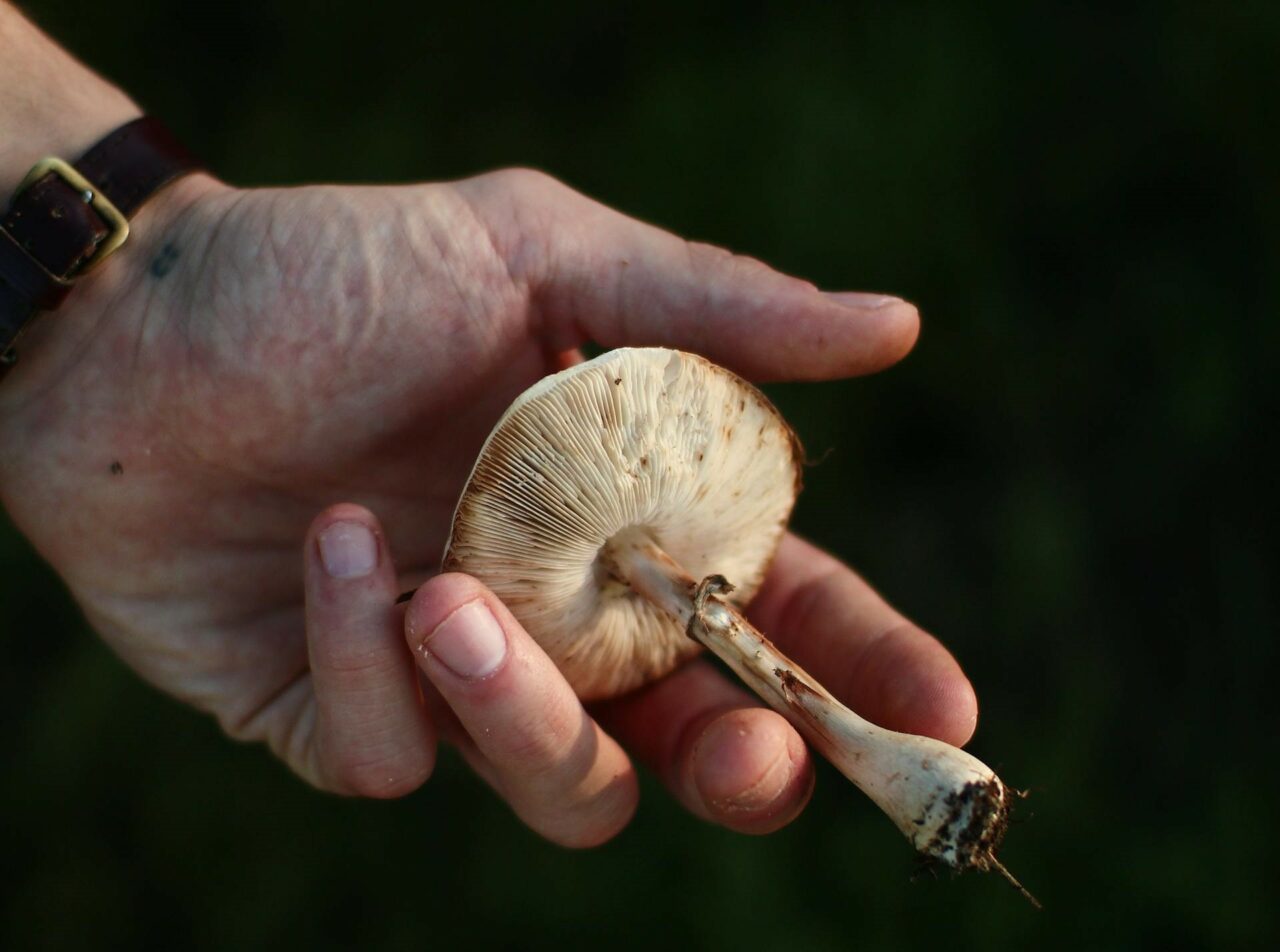Psilocybin mushrooms, similar to LSD in their action as a serotonin 5-HT2A receptor agonist, are a classic psychedelic. Current research is exploring their use in psilocybin-enhanced therapy for mental health issues, such as emotional distress linked to major depression, anxiety, cluster headaches, and migraines.
Understanding how shrooms can help in treating these conditions, it is essential to delve into how they are metabolized in the body. This knowledge enables both researchers and users to comprehend how the active ingredient triggers psychological and therapeutic effects. This article offers a basic guide to the pharmacology and pharmacokinetics of psilocybin.
[toc]
Key Takeaways:
- When consumed orally, half of the psychedelic fungi is absorbed and spreads throughout the body.
- The fungal compound is dephosphorylated by the enzyme alkaline phosphatase, primarily in the liver.
- About 3.4% of the compound is excreted in its unaltered form within 24 hours, with the majority being eliminated as a stable metabolite.
What is Pharmacokinetics?
Pharmacokinetics (PK) refers to the study of how substances like drugs are processed by the body once they are introduced. While it’s closely related to pharmacodynamics, which explores how a compound interacts with the body, PK focuses on four main aspects: absorption, distribution, metabolism, and excretion (ADME).
Understanding these processes helps healthcare professionals to prescribe the most effective medications with the least risk. It also allows them to customize treatments according to each patient’s unique physiology and lifestyle.
How Does Pharmacokinetics Relate to Psilocybin?
Psilocybin and psilocin, the primary active compounds in certain magic mushroom species, have attracted significant interest from both researchers and users. Pharmacokinetics explores how the body processes mushrooms containing psilocybin, aiding in understanding their potential effects, be they medicinal or recreational.
These compounds are known by various names, such as “magic,” “psychedelic,” “medicinal,” or “sacred.” The fungi that contain these compounds are consumed, with The Different mushroom species, their geographical origins, sizes, environmental growth and drying conditions, and age can lead to substantial differences in their potency levels.
Although these magic mushrooms are naturally found in the wild, scientists have discovered ways to produce them synthetically in a laboratory. Both the natural and lab-made mushrooms exhibit low toxicity, but minor side effects such as nausea or vomiting may occasionally occur.
Despite these minor physical side effects, the compounds within these mushrooms have demonstrated potential therapeutic benefits because of their safe profile and non-addictive properties. This has sparked interest among researchers to explore their application in psychotherapy, particularly for treating conditions like anxiety and depression.
Understanding the 4 Stages of Pharmacokinetics
Psilocybin, the compound present in these mushrooms, is inactive in its natural state and functions as a prodrug. It converts into its active form, psilocin, with the help of enzymes such as alkaline phosphatase. This transformation allows psilocin to be absorbed and distributed to different tissues in the body. However, it’s worth noting that after oral intake, psilocybin cannot be detected in the circulatory system, excrement, or urine.
Absorption
Absorption refers to the process by which the compound enters the bloodstream from the point of administration. It plays a key role in determining the speed and effectiveness of the compound reaching its target, such as the plasma. Oral intake is the most common method of administration. Inhalation has also been tried, but it has proven to be less effective than oral consumption.
The absorption process also includes the release of the compound from the dosage form during oral ingestion. Factors like delays in the throat or esophagus can affect this, potentially slowing down the outcome or causing discomfort. Once the compound arrives in the stomach, the acidic environment may start to break it down before it can enter the bloodstream.
Studies conducted on animals suggest that only about 50% of orally taken psychedelics are absorbed and distributed throughout the body.
Factors Affecting the Absorption Process
Several factors can influence the absorption process, leading to variations in the onset, intensity, and duration of effects:
- Stomach Contents: Eating before consumption can delay the process as it slows down the onset of effects. An empty stomach facilitates quicker absorption.
- Body Fat: Compounds can accumulate in fatty tissues, potentially prolonging their effects.
- Age: Metabolic rates and body composition often vary with age.
- Zero-Order Kinetics: The substance is expelled at a steady rate, regardless of its concentration.
- First-Order Kinetics: The elimination rate is proportional to the concentration of the drug.
The term ‘distribution’ refers to the way psilocin spreads throughout the body once it has entered the bloodstream. Psilocin, being lipophilic, has the ability to cross the blood-brain barrier and reach the central nervous system.
The distribution process is influenced by factors such as the size, polarity, and protein-binding capacity of the substance, in conjunction with the individual’s physiology, which includes hydration status and body composition.
The aim is to achieve an effective concentration at the intended location. For the product to be effective, it must reach the specified region, as defined by its volume of distribution, and remain unattached to proteins, allowing it to actively interact with its receptor.
What Factors Affect the Distribution Process?
Several factors can influence the distribution process:
The effects generally begin to manifest between 20-40 minutes following ingestion, reaching their peak at around 80-100 minutes. The effects of magic mushrooms typically endure for a span of 4-6 hours.
How is Distribution to the Brain Achieved?
A preliminary experimental study conducted on two species demonstrated that the order of its binding affinity is 5HT2A > 5HT1A > 5HT2B [23]. It also attaches to receptors of dopamine D1, 5HT1E, 5HT5A, 5HT7, 5HT6, D3, 5HT2C, and 5HT1B.
It acts as a partial agonist at the 5HT2A receptor, with an efficacy of approximately 40%. The psychedelic effects can be ascribed to its partial agonist activity at 5HT1A autoreceptors.
The elevation in mood and psychotomimetic experiences may be attributed to the observed correlation between increased dopamine levels and sensations of depersonalization and euphoria. Hallucinogens function by modifying neurochemistry and receptor activity. It enhances 5HT2A agonist activity by promoting BDNF synthesis in the hippocampus, which subsequently fosters neurogenesis and lessens conditioned fear-related behaviors.
Elimination
Excretion refers to the mechanism by which the The human body dispels substances primarily through the kidneys, but also via the lungs, skin, or gastrointestinal tract. When it involves the kidneys, a naturally occurring psychedelic drug is either filtered in the glomerulus or secreted in the tubules. The process becomes more complex due to some reabsorption.
The primary compound has an average half-life of about 160 minutes, and psilocin’s half-life is approximately 50 minutes. According to animal studies, most of it is expelled through urine, accounting for roughly 65% within 8 hours of ingestion. In smaller amounts, residues of the substance can also be detected in bile and feces.
In human bodies, around 3.4% of the substance is discharged in its initial form within a day. However, a significant portion is eliminated as psilocin-O-glucuronide, a more stable metabolite. The stability of this compound allows it to be identified in urine samples over a prolonged period.
The body employs two primary methods to excrete substances:
Most psychedelic drugs follow the first-order kinetics method, reaching stable concentrations after four to five half-lives. Full removal also occurs after this same time frame.
Discover Our Range of Hallucinogenic Mushrooms
Metabolic processes vary among different species of fungi. By shopping from reliable online vendors like Schedule35 Canada, you ensure you don’t accidentally ingest poisonous mushrooms. Some species, such as Agaric mushrooms, might result in intense and undesirable effects. Hence, it’s vital to procure magic mushrooms from trusted dispensaries instead of uncertain street vendors or wild foraging.
| Feature | Enigma | Full Moon Party | Gold Member | |
| Strain Type | Psilocybe Cubensis OMNI | Psilocybe cubensis (Thai Koh Samui) | Psilocybe cubensis | |
| Potency | Exceptionally high; 3.8% tryptamine content | Moderate to high potency | High potency | |
| Visual Characteristics | Resembles a blob or | Resembles a cauliflower or a brain | Typical appearance of a cubensis; of moderate size | Thick stems of white; caps of a golden caramel hue; visible blue bruising |
| Effects | Considered the most potent; delivers intense effects | Powerful mental high; delayed onset with notable visuals | Intense visuals and euphoria |
Online Learning about Psilocybin Mushroom Utilization
For medical professionals, researchers, and users, understanding shrooms’ pharmacokinetics is essential. Armed with this knowledge, you can make informed decisions about dosage and timing, thereby reducing possible risks.
Discover your perfect psychedelic experience on Schedule35 Canada. Whether you desire a soothing journey or a deeper exploration, our extensive product selection is tailored to your unique requirements. Enjoy premium, safe, and quality-assured shrooms, eliminating worries about unreliable sources or poisonous mushrooms.
Experience the best magic mushrooms Canada has to offer and take your psychedelic journey to new heights.
Frequently Asked Questions
Are there any known interactions between shrooms and other drugs?
Our products may interact with certain medications, particularly those that affect serotonin levels, such as SSRIs (Selective Serotonin Reuptake Inhibitors). SSRIs and SNRIs (Serotonin and Norepinephrine Reuptake Inhibitors) generally reduce the effects, unlike non-serotonergic antidepressants. This reduced effect can last up to three months after discontinuing the use of the antidepressant.
Do all psychedelics follow the same route as psilocybin?
No, each psychedelic substance has a unique structure that requires different metabolic processes to become active, and they bind to various receptors within the body. The mode of administration also affects the absorption of each psychedelic. Although the basic principles of absorption, metabolism, and distribution remain the same, the specific pathways and effects vary for each substance.
Does the form of the shroom affect the pharmacokinetics?
Yes, the form (be it fresh, powdered, or dried mushrooms) can influence the absorption rate. For example, powdered forms may be absorbed quicker than whole dried ones due to faster dissolution.
Recommended Reading:





